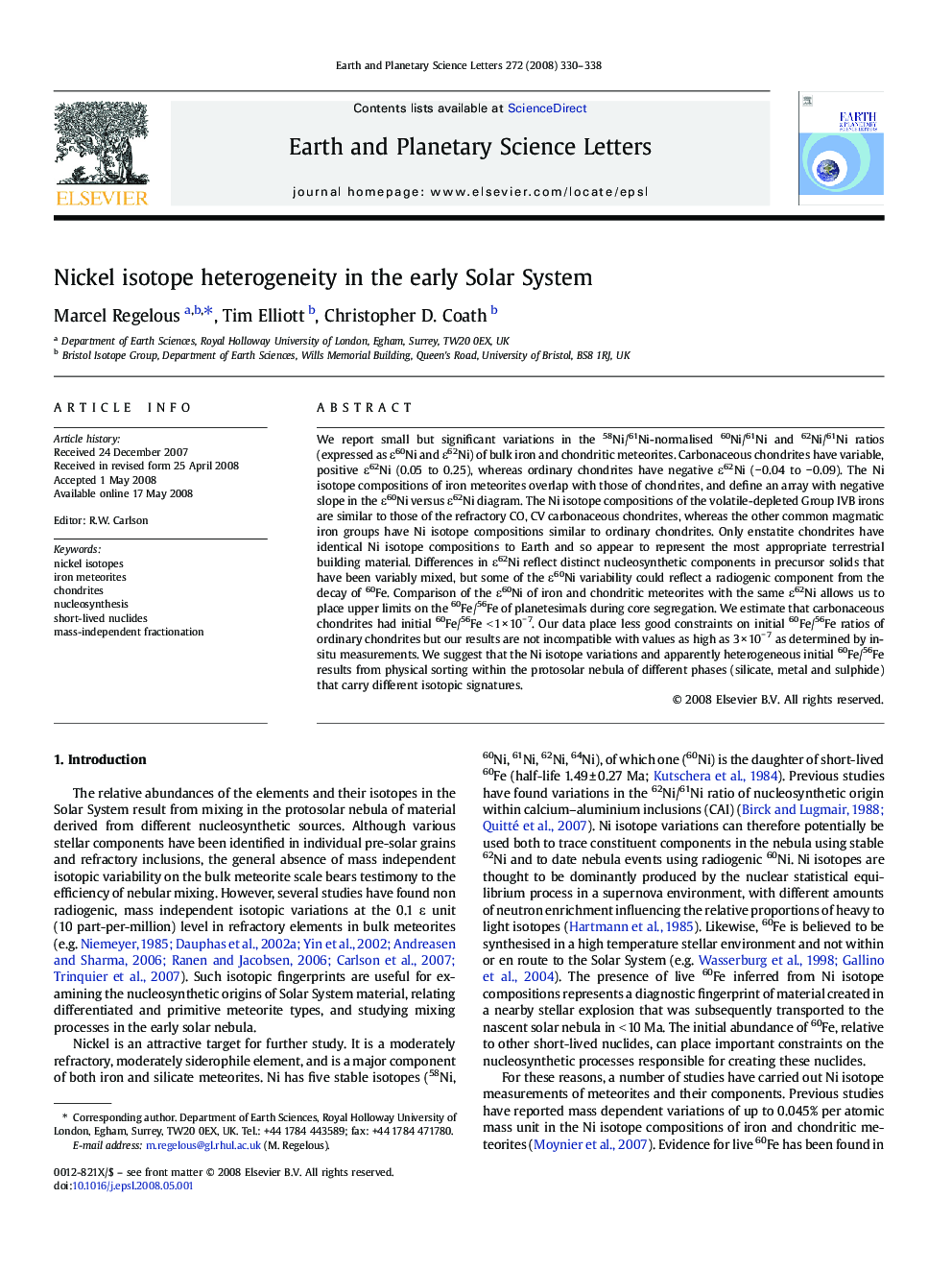| Article ID | Journal | Published Year | Pages | File Type |
|---|---|---|---|---|
| 4679709 | Earth and Planetary Science Letters | 2008 | 9 Pages |
We report small but significant variations in the 58Ni/61Ni-normalised 60Ni/61Ni and 62Ni/61Ni ratios (expressed as ε60Ni and ε62Ni) of bulk iron and chondritic meteorites. Carbonaceous chondrites have variable, positive ε62Ni (0.05 to 0.25), whereas ordinary chondrites have negative ε62Ni (− 0.04 to − 0.09). The Ni isotope compositions of iron meteorites overlap with those of chondrites, and define an array with negative slope in the ε60Ni versus ε62Ni diagram. The Ni isotope compositions of the volatile-depleted Group IVB irons are similar to those of the refractory CO, CV carbonaceous chondrites, whereas the other common magmatic iron groups have Ni isotope compositions similar to ordinary chondrites. Only enstatite chondrites have identical Ni isotope compositions to Earth and so appear to represent the most appropriate terrestrial building material. Differences in ε62Ni reflect distinct nucleosynthetic components in precursor solids that have been variably mixed, but some of the ε60Ni variability could reflect a radiogenic component from the decay of 60Fe. Comparison of the ε60Ni of iron and chondritic meteorites with the same ε62Ni allows us to place upper limits on the 60Fe/56Fe of planetesimals during core segregation. We estimate that carbonaceous chondrites had initial 60Fe/56Fe < 1 × 10− 7. Our data place less good constraints on initial 60Fe/56Fe ratios of ordinary chondrites but our results are not incompatible with values as high as 3 × 10− 7 as determined by in-situ measurements. We suggest that the Ni isotope variations and apparently heterogeneous initial 60Fe/56Fe results from physical sorting within the protosolar nebula of different phases (silicate, metal and sulphide) that carry different isotopic signatures.
